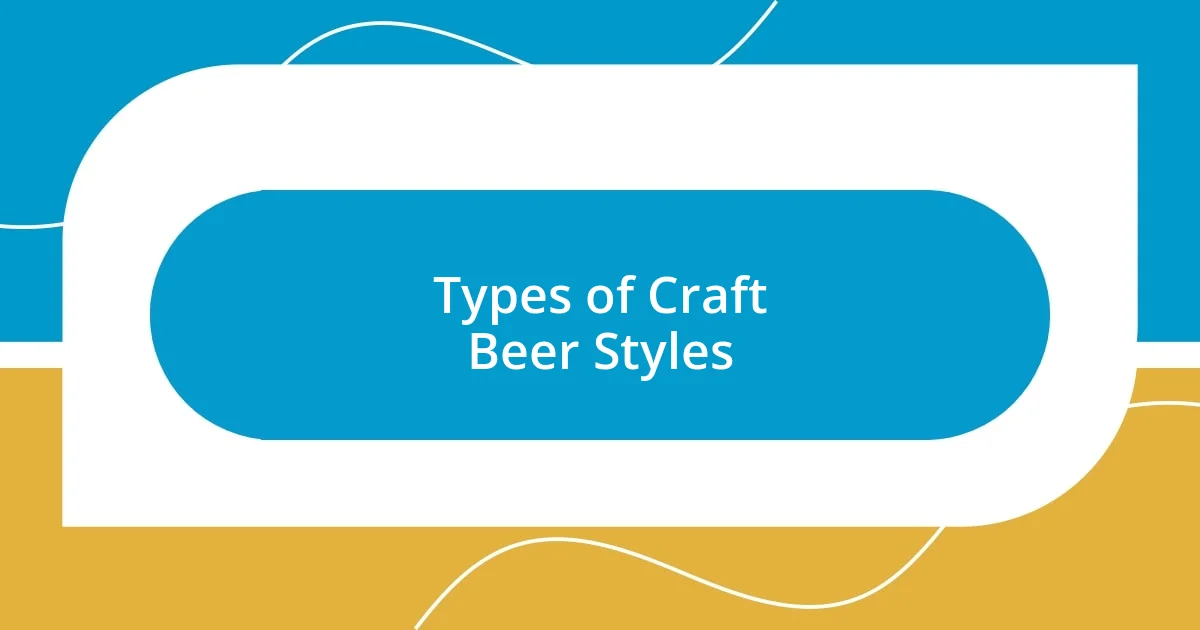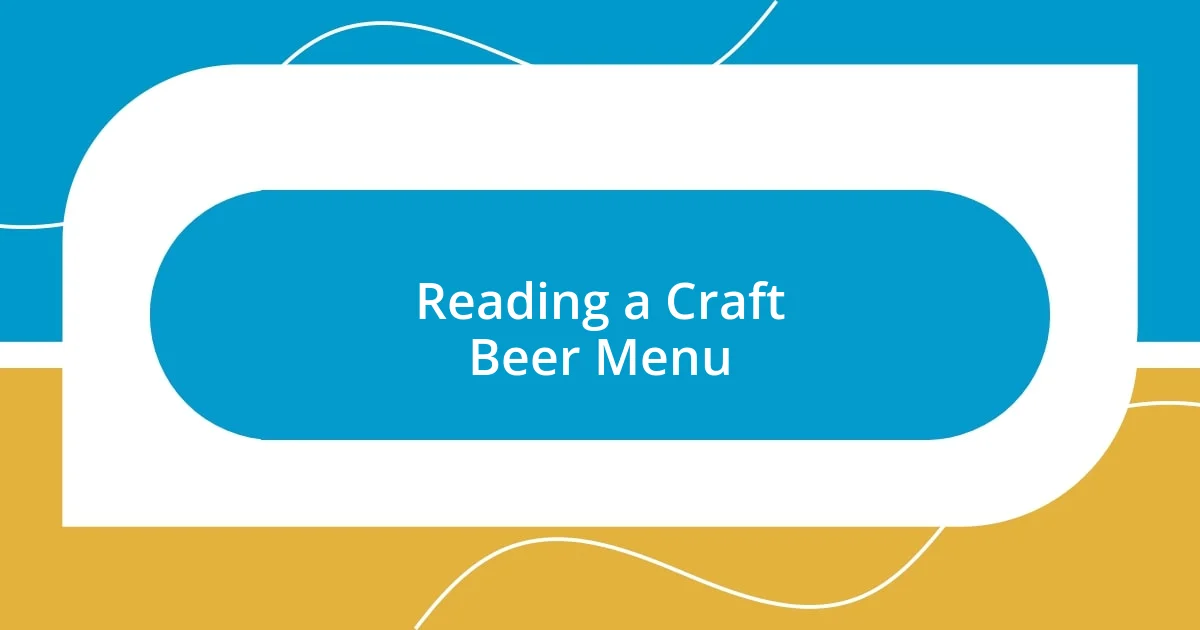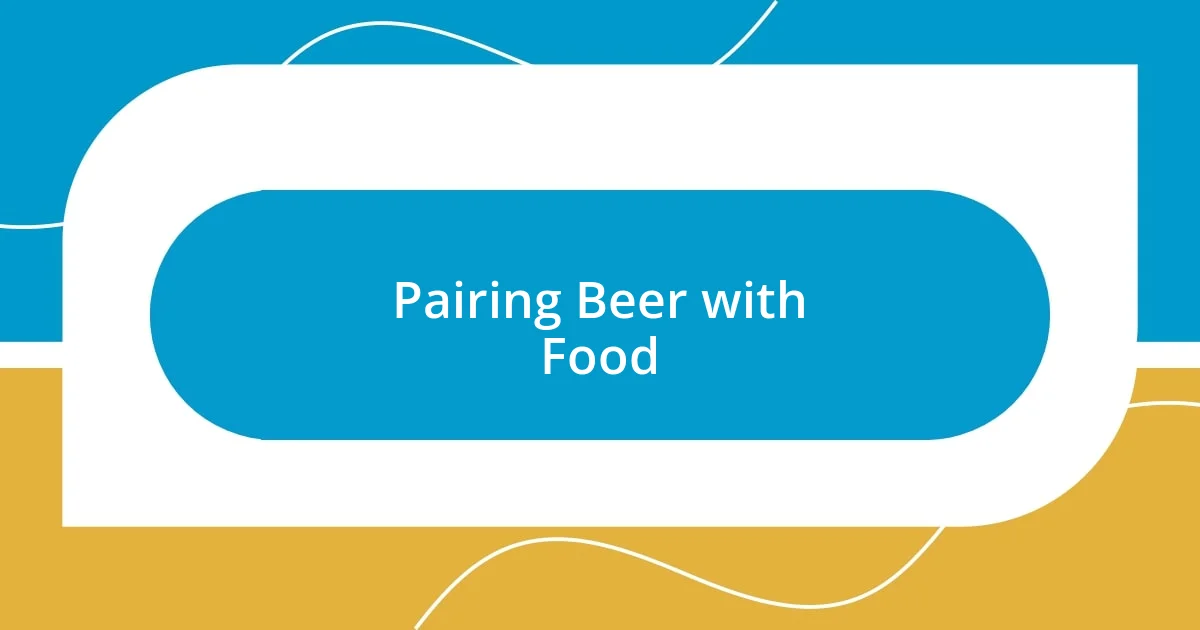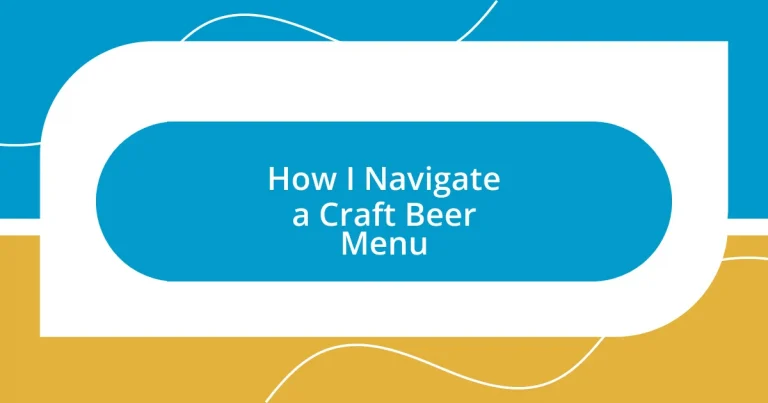Key takeaways:
- Craft beer encompasses a variety of styles, each with unique flavor profiles, making exploration and discovery a rewarding experience.
- Reading a craft beer menu involves understanding descriptions, style categorization, and visual cues to navigate choices effectively.
- Engaging with bartenders enhances the beer tasting experience, opening doors to new recommendations that can surprise and delight.

Understanding Craft Beer Basics
When I first explored a craft beer menu, I was amazed by the variety. You see, craft beer is often defined by its small-batch brewing and the hands-on approach of its creators. Have you ever wondered how different ingredients can completely transform a beer’s character?
Let’s talk about the main types of craft beer: ales and lagers. Ales are typically fermented at warmer temperatures, giving them a fruity or floral character, while lagers ferment at cooler temperatures for a crisper finish. The first time I tried a hoppy IPA (India Pale Ale), I was taken aback by its bold bitterness—certainly not what I expected.
Flavor profiles play a crucial role in selecting your drink. Each beer has a unique combination of aromas and tastes from hops, malt, and yeast. I remember my first sip of a rich stout; it was like tasting chocolate and coffee all at once. It made me appreciate how various factors, like brewing methods and regional ingredients, contribute to each beer’s personality. Isn’t it exciting how you can find something new to enjoy with each menu?

Types of Craft Beer Styles
When diving into the world of craft beer, it’s fascinating to discover the diverse styles available. Each one offers a distinct taste experience. For instance, I remember sipping my first sour ale; the tartness caught me off guard yet intrigued my palate, prompting me to explore more in that style.
Here’s a brief overview of some popular craft beer styles:
- IPA (India Pale Ale): Bold and often hoppy, with a range of bitterness levels.
- Pale Ale: Well-balanced with malt and hop flavors, making it approachable.
- Stout: Dark and rich, embodying flavors like chocolate and coffee.
- Porter: Similar to stout but typically lighter and with a caramel sweetness.
- Sour Ale: Fermented with wild yeast, resulting in a tangy, puckering flavor.
- Wheat Beer: Light and refreshing, often with fruity notes from citrus or spices.
Every time I explore a new style, it feels like a little adventure—a chance to savor something I’ve never tasted before. It’s these small discoveries that make navigating a craft beer menu such a rewarding experience.

Reading a Craft Beer Menu
When I glance at a craft beer menu, I often find it feels like a treasure map waiting to be explored. Some breweries provide rich descriptions that help unravel the story behind each brew, connecting me with its origin. For example, I remember the first time I saw a beer described as “brewed with locally sourced blueberries.” Instantly, I was transported to a sunny berry patch; it made me eager to venture into that specific flavor profile.
The structure of the menu can also be a subtle guide. You might find sections categorized by style, alcohol content, or seasonal offerings. I recall my excitement as I noticed a “limited release” section on a menu, where I decided to take a chance on a barrel-aged ale. That choice ended up being one of my favorites—a complex, rich beer that felt like a warm embrace on a chilly night.
When faced with so many options, I sometimes use the color of the beers as a quick reference for what I might enjoy. Generally, I associate lighter hues with refreshing summer brews and darker colors with richer, dessert-like experiences. It’s interesting how visual elements influence my decisions. Just last week, I opted for a bright golden lager instead of a stout because it caught my eye. It turned out to be a delightful choice, bursting with citrus notes that lifted my spirits.
| Beer Attribute | Description |
|---|---|
| Style | Categorizes the beer based on brewing methods, such as IPAs, stouts, and sours. |
| ABV (Alcohol By Volume) | Indicates the strength of the beer, helping me gauge how much I might want to drink. |
| Flavor Notes | Describes the primary tastes and aromas, often drawing me in based on my personal preferences. |
| Brewer’s Description | A narrative that adds context and character, often enhancing my overall drinking experience. |

Identifying Flavor Profiles
Identifying flavor profiles can sometimes feel like deciphering a complex code. I remember the first time I tasted a true Imperial Stout; the deep chocolate notes mingled with hints of roasted coffee. That experience opened my eyes to how intricate flavors can be, leading me to consider what other ingredients may shape these brews. Have you ever wondered how a small addition of spices or citrus can transform a beer into something remarkable?
When navigating a craft beer menu, I pay attention to the flavor notes described. The term “hoppy” may evoke bitterness to some, while to others, it conveys vibrant aromas of pine and citrus. It’s fascinating how personal experiences shape our perceptions. For instance, I once tried an American Pale Ale described as having floral notes, and I found myself transported back to my grandmother’s garden during spring, filled with blooming jasmine. It made me appreciate the power of these flavor descriptors and their ability to connect us to memories.
Sometimes, I opt for a flight of various beers to explore contrasting flavor profiles side by side. During one memorable tasting, I paired a creamy milk stout with a bright, zesty lemon wheat beer. The contrasting flavors danced on my palate, revealing insights into how sweetness and acidity can play off each other beautifully. I often find myself asking: how can similar ingredients create such diverse experiences? This exploration not only satisfies my curiosity but also deepens my appreciation for the craft of brewing.

Pairing Beer with Food
Pairing beer with food is an adventure that enhances both experiences. One evening, I took a leap of faith and paired a smoky porter with a spicy barbecue. The rich, roasted flavors of the beer tamed the heat from the sauce, creating a beautifully balanced encounter that left my taste buds cheering. Have you ever tried experimenting with flavors in this way? It’s a game-changer!
When I think about complementing flavors, I often recall an instance with a tangy IPA and a creamy blue cheese. At first, I worried the bitterness of the beer might clash with the sharpness of the cheese. But instead, they harmonized, highlighting the citrus notes in the beer while softening the cheese’s intensity. It was one of those moments that solidified my belief in beer’s ability to elevate food and vice versa.
I find that contrasting flavors can create playful tension on the plate. For instance, if I’m enjoying a sweet fruit-forward beer, I love pairing it with a rich, dark chocolate dessert. The subtle sweetness of the beer cuts through the chocolate’s richness, resulting in an indulgent balance that feels celebratory. It’s the kind of pairing that makes me appreciate the craftsmanship involved in brewing and cooking. Do you have a favorite pairing that surprises you?

Asking the Bartender for Recommendations
Asking the bartender for recommendations can be one of the most enlightening parts of exploring a craft beer menu. I vividly recall a night at a local brewpub where the bartender enthusiastically introduced me to a sour ale. My initial hesitation about sours quickly faded once she described its tart cherry notes and the refreshing finish. How often do we let our preconceived notions block us from enjoying something new?
I’ve learned that bartenders are often the best resources—especially those who are passionate about their craft. On another occasion, I asked for something with a strong caramel flavor, and she guided me toward a buttery, toasty amber ale. That experience taught me that sharing what I’m looking for can lead to delightful surprises. Have you ever gone against your usual choices because a bartender’s enthusiasm hooked you?
When approaching the bar, I like to share my preferences or recent favorites. This opens the door for the bartender to suggest unique choices I might not have considered. I remember one time sharing my love for citrusy IPAs, and the bartender recommended a unique hybrid that combined elements of a pale ale and a traditional IPA. The joy of discovery was palpable as I tasted that first sip and realized I was on the brink of finding my new go-to beer. Engaging with bartenders not only enriches my beer experience but also connects me with passionate individuals who live and breathe beer culture.














